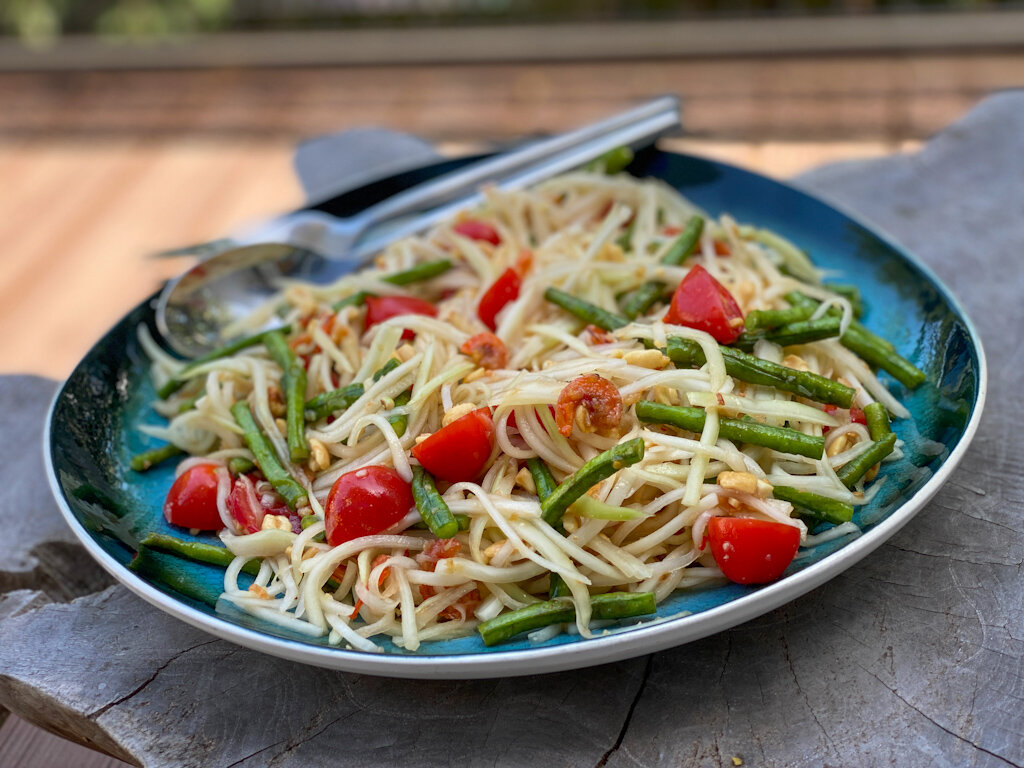Wowie kazowie! It was even better than I imagined — these ingredients indeed have an amazing affinity with the avocado, and the fish sauce underlined it all with a gentle soulful salty funk that added incredible dimension. The garnish: more minced shallot, cilantro leaves and — an essential flourish — julienned makrut lime leaves made it taste (and smell) even more deliciously Thai.
I love the Bangkok Guac with shrimp chips, and when you scoop up a bit of guac on one, you can hear the chip faintly sizzle and pop from the touch of the guac’s moisture. We tried them with cucumber chips, too — Persian cukes sliced diagonally into slices about 3/8 inch thick. The flavor combo with the cukes was beautiful, though the cuke chips are a bit slippery with the guac.
So, how good is this Bangkok Guac? Well, I’m not sure I’d turn myself upside down trying to find the ingredients just to make it. But if it’s not too much trouble to source them, I would absolutely highly recommend you give it a try. If you have a Thai grocery or an Asian supermarket with good supplies of Thai ingredients available, you should be able to find the makrut lime leaves and lemongrass, and sometimes you can even find lemongrass in well stocked Western supermarkets. Makrut limes for zesting is more of a challenge; they are available online (see the recipe for a great source). I think if you used regular Persian or key lime zest, you’d come close.
Meanwhile, we are working on a review of an awesome Thai cookbook, Simple Thai Food. If you wind up loving the book, and loving cooking Thai as much as we now do, you’ll want to stock up on these essential ingredients. Once you start stocking these ingredients, Bangkok Guac may sound like just the thing when you spot ripe avocados.
OK, enough talking. Here’s the recipe.








